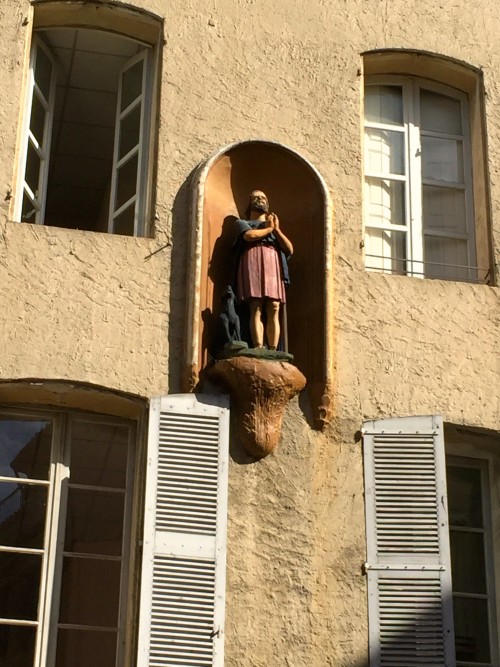 (photo by Steve Wheeler)
(photo by Steve Wheeler)
There are few times in history when such a huge proportion of the world population has been killed so quickly. One of those times was during the Bubonic Plague or the “Black Death”.
During a recent trip to southern Europe, I noticed many beautiful statues of Christ prominently placed on buildings, always at the second or third floor level which made them visible to passersby. They were presented in a way often found in churches. I asked our guide what this was all about and she told me of The Plague (aka Black Death).
 Back in the 14th century when the “Black Death” was rampant and people were dying by the thousands, church goers became scared to be in close enclosed quarters with strangers for fear they may be infected. The Bubonic Plague was highly contagious and little was known as to what caused the disease at that time so being cured was generally not an option.
Back in the 14th century when the “Black Death” was rampant and people were dying by the thousands, church goers became scared to be in close enclosed quarters with strangers for fear they may be infected. The Bubonic Plague was highly contagious and little was known as to what caused the disease at that time so being cured was generally not an option.
Christians still wanted to worship so they erected these ‘shrines’ for lack of a better word. This way people could still worship in the safety of the open air, naively believing the circulating air would blow away the Bubonic germs.
I found these makeshift sanctuaries to be quite beautiful. They added to the history and mystery of the city’s ancient streets — what stories they could tell!
Alright, so as not to leave you in a somber mood, I will share with you a test answer from one of my favorite coffee table books, F in Exams Pop Quiz, by Richard Benson.
The question is: How was the Black Death dealt with?
Answer: By dying, usually.
That may be a bit of dark humor, but I hope you got a laugh — stay well until our next post!

When I lived in Lyon I saw these all over the cobblestone streets of the medieval section of town… now I know the backstory!
They’re so pretty, right?